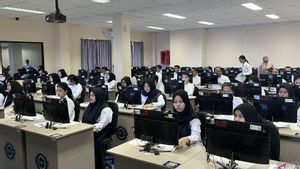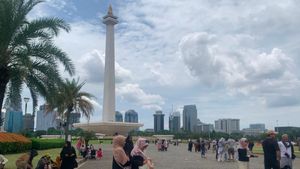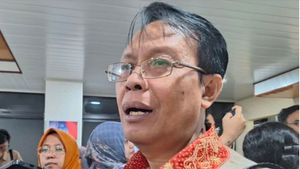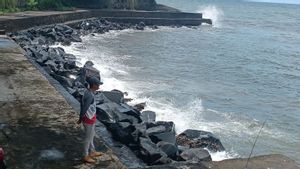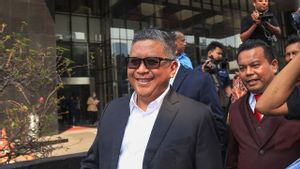JAKARTA - The temple building in Srigading Village, Lawang District, Malang Regency, East Java, collapsed. It is estimated that due to weathering at a number of points, the structure of the building is unstable.
Ten November Institute of Technology (ITS) Geologist Amien Widodo said, based on temporary observations, there were a number of points on the building foundation that were weathered or broken.
"If we look around, many have collapsed or are unstable compared to the surroundings. So the bottom brick has broken, so the building is curved," Amien said, Monday, March 7, quoted from Antara.
Amien estimates that the bricks that form the foundation of the building have weathered, especially at a number of points at the bottom. Due to weathering, the bricks become more brittle and break easily.
Under these conditions, it is estimated that the building's foundation is estimated to be unable to withstand the weight of the body and the roof of the temple which will eventually cause the building, which is estimated to be ten meters high, to collapse.
"During the rainy season the soil around it gets wet and causes weathering and brittleness of the bricks. The bricks that were submerged earlier became weathered and more brittle than those above," he said.
Another hypothesis, continued Amien, is that the temple building collapsed due to an excessive load on the roof and body of the building which could be caused by a fallen tree, and hit the building.
"If we see a lot of cracks in the vertical direction, if mechanically, it's because there is a load from above so that it breaks like that. The load from above is probably whether there was a big rock or a tree (which hit)," he said.
On that occasion, his party also helped the East Java Cultural Conservation Preservation Center (BPCB) to analyze what types of rocks were found at the Srigading site.
"We help to analyze the rock. So what kind of rock is it. More towards that, including the analysis of the bricks. I'm looking for how old it is," he said.
Currently, the third stage of excavation is being carried out at the Srigading Site which will be carried out on March 3-8 2022. The excavation focuses on excavating the "well" or the center of the temple, cleaning the north side of the temple, revealing the original site pages and carrying out documentation.
The Srigading site was originally known as Cegumuk by local residents, which means a mound. The site was discovered more or less in 1985 with the yoni and a number of statues on the mound.
BPCB East Java has confirmed that the building is a temple facing east or Mount Semeru and is used as a place of worship for the Shivaist Hindu sect.
The English, Chinese, Japanese, Arabic, and French versions are automatically generated by the AI. So there may still be inaccuracies in translating, please always see Indonesian as our main language. (system supported by DigitalSiber.id)



